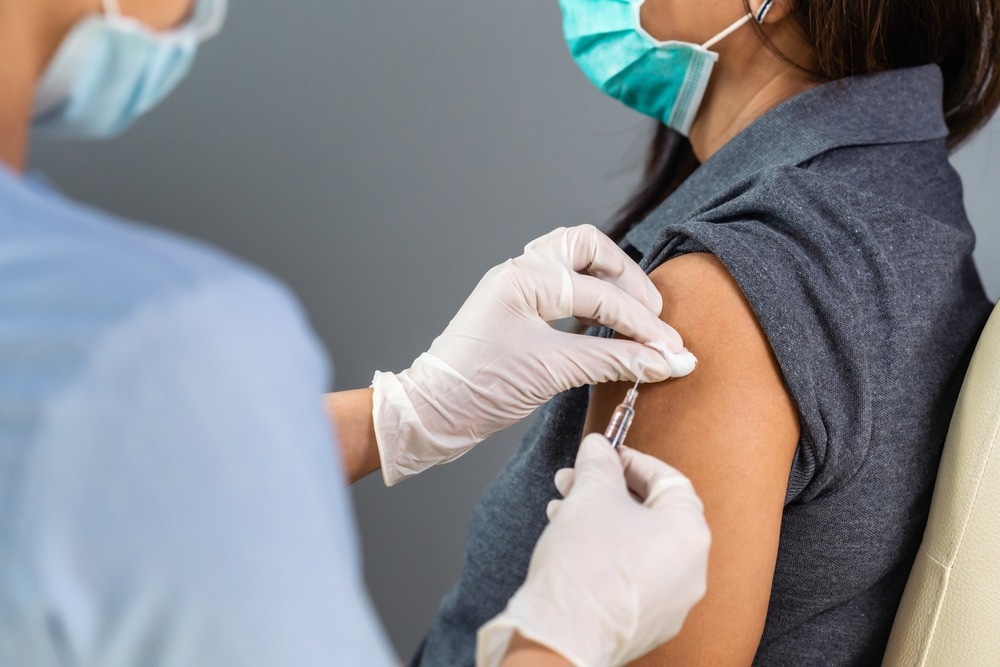



In a recent study posted to the Preprints with The Lancet* preprint server, researchers developed a mathematical model to predict the potential impact of maternal vaccination on respiratory syncytial virus (RSV)-related childhood mortality. The participating expecting mother(s) received the RSV prefusion F protein-based vaccine; the researchers estimated this vaccine’s efficacy, defined as the percentage of RSV-related mortality cases averted among infants below six months.


Background
The study model helped predict the impact of maternal vaccination with the RSV F vaccine in low- and middle-income countries (LMICs) on both in- and out-of-hospital mortality despite the high burden of RSV morbidity in the LMIC populations.
Note that in LMICs, resources are limited. Thus, in these countries, governments and funding organizations need information regarding the effectiveness of new vaccines to prioritize their use among those who need them the most. Thus, to optimize the RSV vaccination strategy in LMICs, it is important to know the duration for which the RSV F vaccine confers protection.
A previous mathematical model captured the effect of the RSV F vaccine on infant’s neutralizing antibody (nAb) titers and published its findings in the RSV GOLD mortality database. Since its publication, new data on other maternal vaccines have become available in this database. Yet, RSV literature has limited data on country-specific estimates of the RSV F vaccine coverage, efficacy, and RSV-related in-hospital mortality.
About the study
In the present study, researchers developed a mathematical model that estimated the impact of maternal vaccination with the RSVpreF vaccine in LMICs on both in-hospital and out-of-hospital RSV-related infant mortality. This model was an improved version of the previously published model. First, the researchers parameterized this model on RSV-A and RSV-B nAb titers. Second, they assumed a peak in nAb titers in the mothers’ serum at day 14 post-vaccination compared to the day 21 peak assumed in the previous model.
Lastly, they added maternal antibody decline to match the phase I/II RSV RSVpreF clinical trial data. The results of this trial showed an efficacy of 76.9% for severe RSV-associated lower respiratory tract (LRT) illness during the initial 180 days in LMICs during the era of the predominance of RSV-B.
Further, the researchers used their mathematical model to compare the duration of RSV vaccine-induced immunity to the distribution pattern of age at the time of death in the RSV GOLD database. They also used country-specific data on the timing of ANC visit distributions to make country-specific mortality predictions. It served as a proxy for the likelihood distribution of the timing of maternal vaccination.
They multiplied the country-specific estimates for vaccine efficacy by the service availability and acceptance proxy documented by Baral et al. to fetch country-specific estimates for vaccine efficacy, assuming a vaccine coverage resembling real-world settings.
Furthermore, the researchers used the mortality estimates reported by Li et al. to estimate the number of RSV-related mortality cases averted yearly in 51 GAVI-eligible countries; note that GAVI is a public–private global vaccine alliance.
Results
Per the study model estimates, on average, an infant born at a gestational age of 40 weeks remained protected for nearly five months from RSV-B-related mortality and between six and seven months from RSV-A mortality. The higher threshold for the pre-vaccination RSV-B nAb titers primarily drove vaccine-induced longer protection from RSV-A than RSV-B.
The RSVpreF vaccine averted the likelihood of RSV-related mortality during the first six months of life, i.e., the period of highest mortality risk for neonates. So, the researchers recommended giving the RSVpreF vaccine early during pregnancy (optimal time), which is a key implementation guidance.
Further, per model estimates for 51 GAVI-eligible countries, maternal RSV vaccination averted up to 63% of in-hospital mortality cases in infants below six months of age annually. It corresponded to a weighted median of 63% and 55% of RSV-A-related and RSV-B-related deaths averted in the selected countries, respectively.
Conclusions
The study highlighted the importance of the timing of vaccination in the gestational age window and the effect of prematurity on the potential impact of maternal vaccination. The mathematical model served as a valuable tool to make country-specific predictions for RSV vaccine impact in the future.
Additionally, this model could help explore the effect of vaccination timing and gestational age of the neonate on vaccine efficacy. Nevertheless, it showed that maternal RSV vaccination could substantially decrease RSV-A and RSV-B-related in-hospital and out-of-hospital mortality in LMICs in the first six months of life.






Journal reference:
- Preliminary scientific report.
Willemsen, J. et al. (2023) “Maternal Vaccination Against RSV Can Substantially Reduce Childhood Mortality in Low-Income and Middle-Income Countries: A Mathematical Modeling Study”. Preprints with the Lancet. doi: 10.2139/ssrn.4399151. https://papers.ssrn.com/sol3/papers.cfm?abstract_id=4399151









